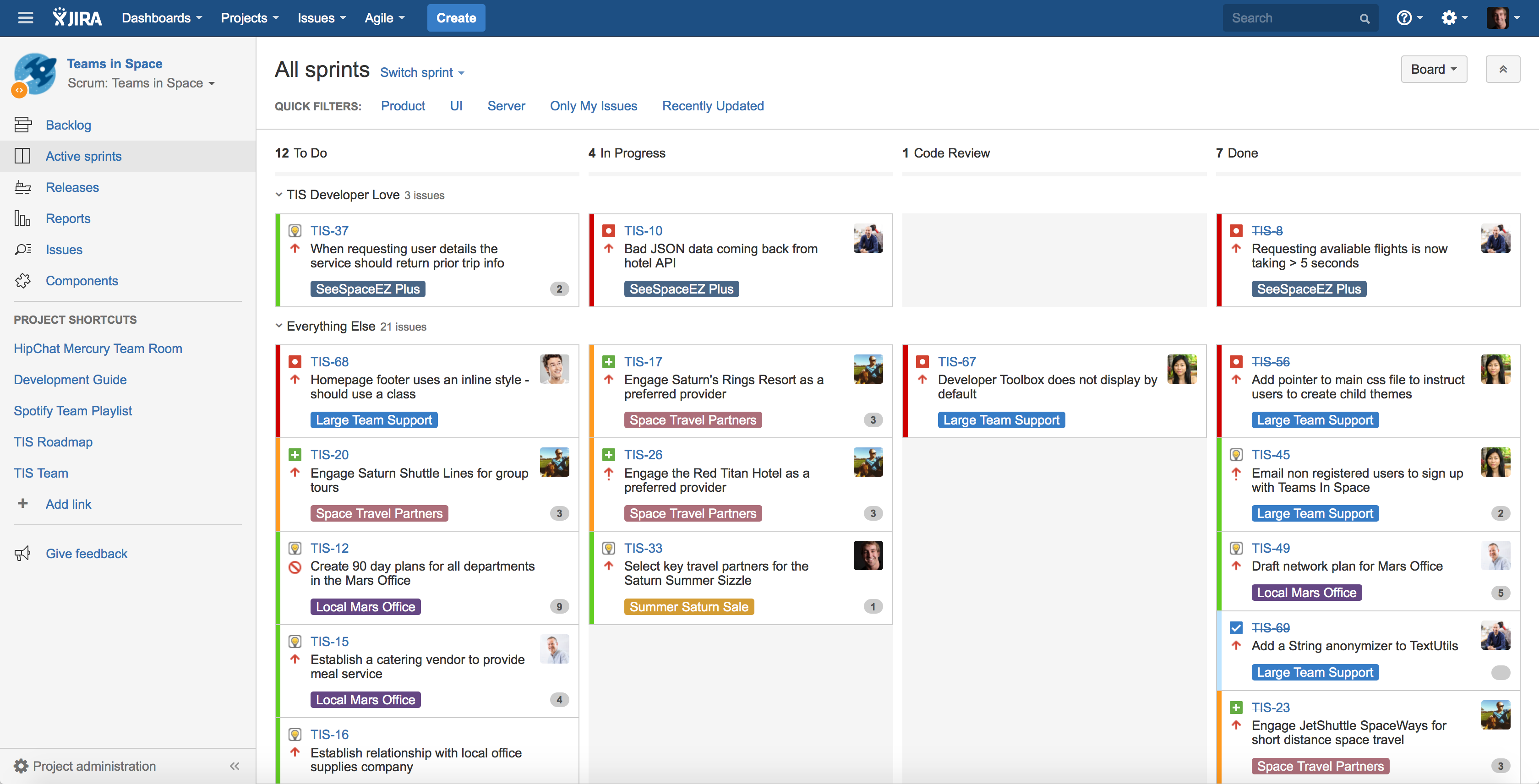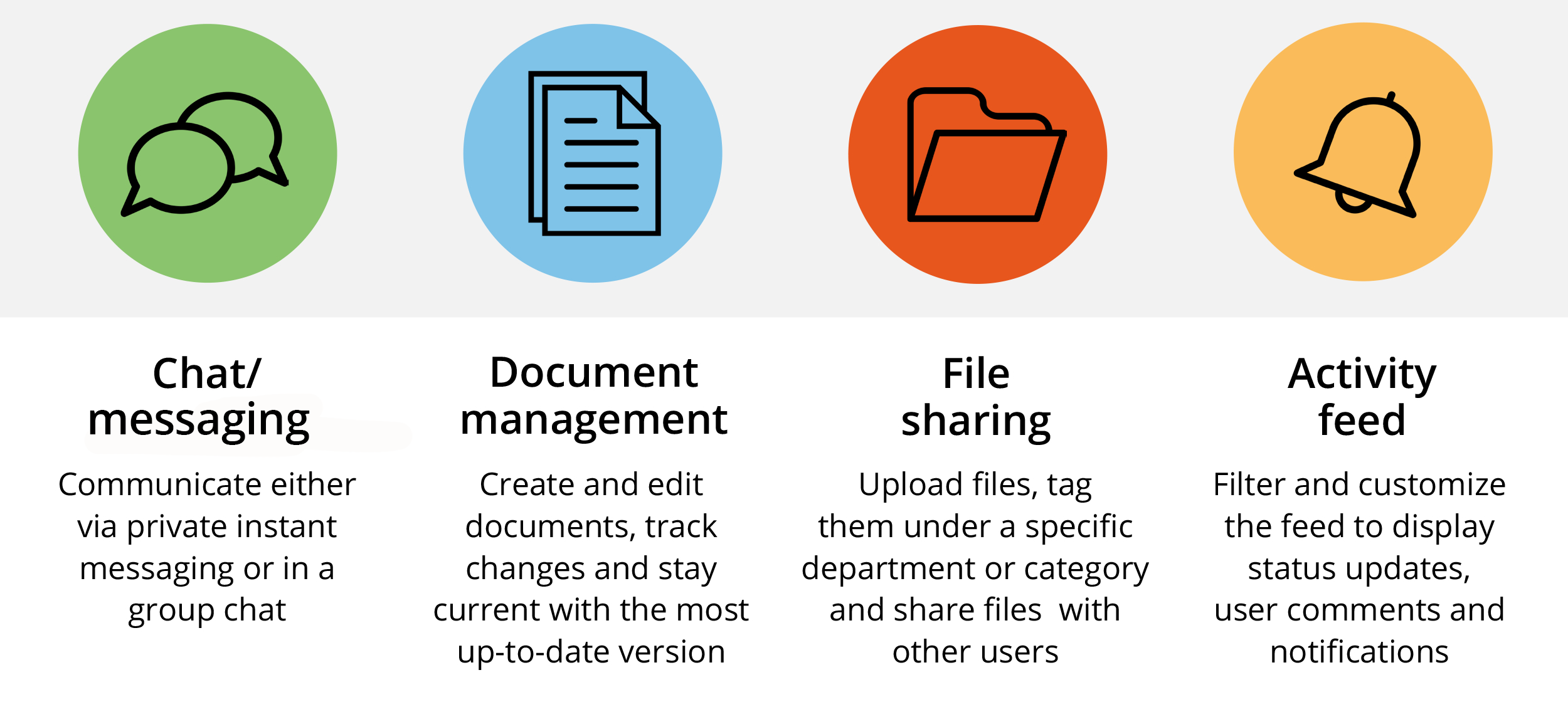Evaluating 5 Project Management Trends And What They Mean for SMBs
If you’ve seen VH1’s “I Love the ‘90s,” you know that fads fade. In hindsight, we can laugh at our boy band-inspired frosted tips and our heavy-handed application of butterfly hair clips, but at the time, we didn’t have the foresight not to jump on the trend bandwagon.
How much time and money could have been saved if we’d sidestepped those short-lived trends is anyone’s guess. Luckily, those were only fashion faux pas.
When a small business takes a chance on a burgeoning project management trend and it fails to catch on, well, it’s not just embarrassing high school photos they have to live with.
With an ever-increasing demand for project resources and a smaller IT budget than enterprises, small businesses have to be meticulous with how and where they choose to invest. One risky venture and they might dig themselves into a hole they’ll never be able to climb out of.
That’s why we’re taking a closer look at five project management trends outlined in Gartner’s 2016 Hype Cycle for Project and Portfolio Management (this content is available to Gartner clients) and carefully evaluating their worth for small businesses.
Here’s what we’ll cover:
Trend #1: Agile Project Management
Trend #2: Earned Value Management
Trend #3: Project Collaboration and Management
Trend #4: Project Management Certification
Trend #1: Agile Project Management
What it is: Agile project management (PM) is a PM methodology designed to help teams address changing needs and requirements over the course of a project life cycle. This system is particularly suited to industries with high amounts of uncertainty surrounding requirements at the onset of the project.
Gartner analyst Robert Handler describes agile PM as being focused on incremental delivery of value against a vision. Teams embrace change throughout the project life cycle as required in order to manifest that vision.
This differs from traditional waterfall PM, which tries to avoid changing requirements mid-project and measures success by adherence to initial baselines set for a project’s scope, budget and timeline.
Potential benefits: Agile teams break projects down into incremental phases, where in each phase they complete a piece of the project and deliver it to the customer or end user for feedback.
By increasing opportunities for feedback, teams are better able to respond to changes and build them into upcoming iterations, so they ultimately deliver the most value.
Agile PM tools, such as scrum and kanban software, are designed to help teams map out their workflows through the different stages in the project life cycle. Their visual nature allows teams to see at a glance the status of every task and deliverable: who it’s assigned to, when it’s due, what stage it’s in, if it’s high or low priority etc.


(https://www.softwareadvice.com/sa_lightbox_responsive.php?industry_id=22&type=quote&product_id=4315&page_variation=vs_35033&conversion_page_url= https://www.softwareadvice.com/project-management/atlassian-jira-profile/)
Active sprints in JIRA Software
This helps keep everyone on the same page, since users know where each task is going next and where it was before. High-priority tasks can be flagged or moved to the top of a list so users know what’s most important to work on next.
Relevant for small businesses? Yes.
Agile PM works well for those industries that experience frequent change between project planning and delivery, e.g., software and technology, marketing and communications and PR and advertising.
Scrum works best for teams with definitive work cycles, e.g., those who complete one requirement over the course of one sprint. Many software development teams use scrum tools, such as SpiraPlan or JIRA Software, which are part of larger suites that altogether create a platform for application life cycle management.
Kanban is better suited for teams with continuous workflows, that begin and finish work sequentially. Many marketing and communications teams use kanban tools, such as LeanKit.
There are several free scrum and kanban tools including Taiga, which supports both scrum and kanban workflows, as well as Trello, which aligns more closely with kanban.
For an in-depth look at which of these agile methodologies is right for your small business, download our free e-book.
Trend #2: Earned Value Management
What it is: Earned value management (EVM) is a PM practice used to measure progress and performance against a defined scope.
Managers and stakeholders use EVM metrics, such as the four described below, to compare project schedules with budgets, which allows them to gauge performance and identify early warning signs of overages.
The Building Blocks for EVM Analysis

Source: Ten Six “The 4 Building Blocks of Earned Value Analysis”
Potential benefits: By using EVM metrics to identify variances in schedule and budget during project execution compared to the baselines set during planning, managers can take corrective action before an overrun gets out of control.
To make EVM most effective, managers should perform exhaustive project planning to ensure they identify accurate scope, budget and schedule baselines before the project is underway.
Relevant for small businesses? The practice of EVM: Yes. Specialized EVM software: No.
The cost alone for specialized EVM software, such as Deltek Cobra or EVMS forProject, likely puts these systems out of reach of most small businesses, not to mention their complexity or the investment of resources required to set them up.
Instead, small businesses should invest in managers with a working knowledge of EVM who can apply these techniques when and where appropriate, without having to invest in specialized EVM tools.
If your small business is at a level two PPM maturity, i.e., has structured and repeatable PM processes, managers can start to implement EVM at the project level, tracking EVM metrics using standard PM tools, such as Microsoft Project.
Small and midsize businesses (SMBs) at a level three PPM maturity, i.e., those that have organizational consistency, can track EVM metrics using more advanced project and portfolio management systems, such as Unanet or Safran.
Trend #3: Project Collaboration and Management
What it is: Project collaboration software creates a centralized workspace that encourages communication and collaboration between users. Top features to look for in collaboration software include:
Must-Have Collaboration Features

Potential benefits: There are myriad benefits associated with teams using collaboration tools. The following are a few examples:
Benefits of Using Collaboration Software

In addition to the above benefits, collaboration tools can greatly increase employee productivity.
You could be wasting time switching between multiple tools. For example: You email Ted the latest version of the presentation, then check calendars to schedule a time for the presentation, then go back to email to read Ted’s feedback, then go back to the presentation to make those changes. With collaboration software, all these actions can be performed within a single tool.
Relevant for small businesses? Absolutely. If you don’t already have collaboration software, invest in it immediately.
Stand-alone tools such as Slack or Box can supplement existing systems. Or, if you’d prefer an all-inclusive tool, look at a traditional PM system, such as Wrike or Teamwork.com.
For help comparing collaboration tools, visit our interactive buyer’s guide. Filter products by various criteria, including number of reviews, size of business served and price. Click on “Learn More” to read customer reviews and see how your peers have rated the product for qualities such as customer service and ease-of-use.
Trend #4: Project Management Certification
What it is: Project management certification is the recognition of “project management” as a defined area of study and discipline. Project managers looking to become certified take an established course and pass a standardized test demonstrating their mastery of the subject area.
The two most well-known and recognized certifications are the “project management professional,” or PMP, and “PRINCE2,” which stands for “PRojects IN Controlled Environments.”
Potential benefits: Certified project managers earn on average 20 percent more than their uncertified counterparts. Additionally, PMI reports in their 2015 Pulse of the Profession study that when more than one-third of project managers are certified, businesses experience more timely project delivery, adherence to budget allocations and achievement of business goals.
Relevant for small businesses? Not really.
Gartner estimates that project management certifications will become obsolete before they reach mainstream adoption. Not because the knowledge at the core of the certification isn’t useful, but because it doesn’t reflect the recent digital transformation that has overtaken the industry.
Analyst Michael Hanford says that “project management” is becoming a core discipline that spans organizational functions and services and is moving away from a single, specialized role in IT. Yet the certifications themselves have been largely un-updated and do not reflect this shift nor the business impact of digital technologies.
For small businesses, this means that experience beyond the IT department and mastery of a variety of business capabilities will trump certification of basic project management skills.
Trend #5: Resource Management
What it is: Resource management is a project management process that involves managers identifying employee skill sets, tracking their availability and workloads and assigning them to projects accordingly.
To make this process most effective, many managers perform resource capacity planning, which is a strategy for balancing employee supply (availability) with project demand.
Resource management software automates these functions and makes it easier for managers to allocate staff to projects.
Potential benefits: Effective resource management is especially important for organizations practicing portfolio management as it gives project leaders visibility into resource needs across the organization’s portfolio of projects.
Additional benefits include:
More even work distribution: Although key resources will always be in high demand, resource management tools allow managers to spread the workload more evenly across employees. For example, if your primary software developer has another commitment, scheduling three junior developers in his/her stead.
Streamlined project planning and scheduling: Reduce scheduling conflicts and task switching by assigning the right employees to a project from the start. Understanding each employee’s commitments and availability helps managers understand the work capacity of their staff and plan projects more effectively.
Relevant for small businesses? Resource capacity planning: Yes. Specialized resource management tools: Probably not.
According to Gartner analysts Robert Handler and Donna Fitzgerald, businesses likely don’t need specialized resource management software until the team is larger than 30 people.
Until then, most small businesses can get by with the resource management capabilities available in traditional project management platforms and by taking steps to match resource capacity with demand.
To learn about best practices for performing resource capacity planning, go here.
Conclusions
As you can see, not every project management trend is right for your small business. While it’s important to look to the future, before investing in new technology or training, evaluate both the short and long-term benefits that this investment will offer.
At the end of the day, most small businesses will benefit more from mastering processes over spending on specialized tools, so make your investments of time and money wisely.
If you have questions about the trends and technology we discussed in this article, please email me at eileen@softwareadvice.com.